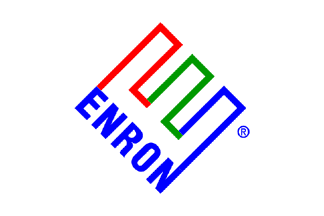Superb Culture (#50)
One of the building blocks of any exceptional organization is a superb culture. Culture is defined as the beliefs, values, and behaviors that determine how an organization’s people interact and behave both inside and outside the organization. It’s not something an organization says or tries to be; it is something an organization does.
Culture influences organizational performance, innovation, agility, engagement, and competitiveness. Research shows that a toxic culture decreases productivity by 40%, while an effective culture increases productivity by 20%. It’s clear that having a superb culture gives you a competitive advantage. So what is a superb culture composed of and how do you build and maintain it?
In my opinion, a superb organizational culture is built upon three concepts — purpose; values; and having a safe, connected, and engaged environment.
Purpose — the why for your company or your organization.
Values and Behaviors — the principles or behaviors that drive the organization.
Safe, connected, and engaged environment — an environment where the group is engaged, each individual talks and listens, members talk directly to each other, and it is safe to provide feedback.
The US Army’s culture could be described as:
Purpose — be prepared to and if called upon fight and win our nation’s wars
Values and Behaviors — the Army’s stated values are Loyalty, Duty, Respect, Selfless Service, Honor, Integrity, and Personal Courage. In addition, its unofficial values/behaviors include physical fitness in the morning, extensive use of powerpoint, hurry up and wait, and timeliness. One way groups reinforce these values is by using the history of the organization to tell stories that reinforce the desired values. I talk more about using the history of your organization to enhance culture in post #33 (https://www.thefivecoatconsultinggroup.com/the-coronavirus-crisis/enhancing-culture )
Safe, connected, and engaged environment — the Army’s safe, connected feedback method that encourages group learning is the After Action Review. I talk more about the AAR in post #41 and how you can use it with your team ( https://www.thefivecoatconsultinggroup.com/the-coronavirus-crisis/after-action-review-2 )
A company that is well known for its superb corporate culture is Pixar. Pixar is a computer animation studio and subsidiary of the Walt Disney Corporation that has produced 22 outstanding animated films over its 34 years of existence, including Toy Story, Brave, The Incredibles, and Coco. The films have earned approximately $14 Billion at the box office. Pixar is known for cultivating a creative culture.
Pixar’s Logo
Pixar’s culture could be described as:
Purpose — Make great films with great people
Values and Behaviors:
Great people are a priority
Collaboration amongst the team
Take risks
Have fun
Safe, connected, and engaged environment — Pixar utilizes open office spaces, constructive feedback mechanisms to develop their films, postmortems to discuss their failures, and open communication throughout the entire organization to encourage a creative, collaborative environment.
Let’s look at Enron, a company that struggled with its corporate culture. Enron was an energy, services, and commodities company that stock’s value made it the 7th largest company in America at one time. However, the company moved liabilities off the balance sheet and hid the fact that it was booking revenues for multiple years ahead. These actions hugely inflated profits and Enron’s share price. Once its deception was revealed, Enron filed for bankruptcy in 2001, causing the disbandment of the Arthur Anderson accounting firm as well. Many of Enron’s senior leaders were prosecuted for their roles in the deception. If you want to learn more, Enron: The Smartest Guys in the Room is a fantastic documentary about the company’s rise and fall.
Enron’s Logo
Looking at Enron’s cultural shortcomings provides another perspective on culture:
Purpose — to become the world's leading energy company — creating innovative and efficient energy solutions for growing economies and a better environment worldwide.
Values and Behaviors — Enron’s stated values in its’ 2000 Annual Report were:
Communication – We have an obligation to communicate.
Respect – We treat others as we would like to be treated.
Integrity – We work with customers and prospects openly, honestly, and sincerely.
Excellence– We are satisfied with nothing less than the very best in everything we do.
However, the actions of the the company demonstrated that it prioritized greed, arrogance, and pushing the boundaries as far as legally possible and beyond. Enron is an excellent example where the values can’t be just words on the wall — they have to be what the company does every day.
Safe, connected, and engaged environment — Enron’s policy of eliminating the bottom 20% of the employees every year created a very competitive environment, limited the building of trust and safety, and stifled candid feedback.
Great organizational cultures are built upon three concepts — purpose, values and behaviors, and having a safe, connected, and engaged environment for feedback. Hope this post gives you some ideas on how to keep building the culture of your organization.



